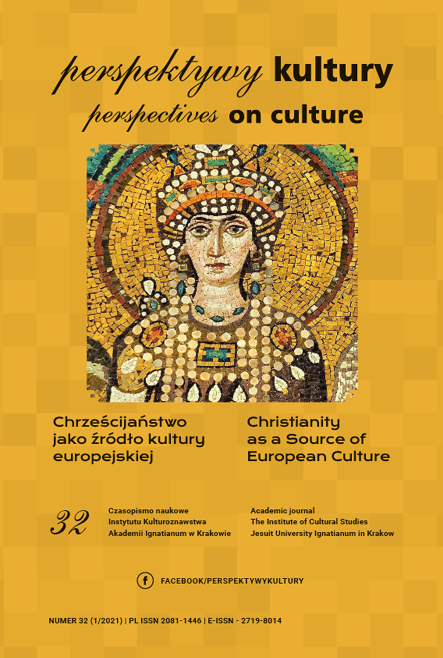The World of the Anatolian Armenians in the Short Stories of Hagop Mıntzuri
Abstract
Hagop Mıntzuri (1886–1978) is an Armenian short story writer from Turkey, who was born in the village of Armudan in Eastern Anatolia. During the Armenian genocide in 1915 he was staying in Istanbul, and this saved his life. His entire family – his wife and four little children – were killed in the massacre. He began to publish his short stories only in the second half of the 20th century. Even though he lived a considerable part of his life in Istanbul, in his short stories he discussed mainly the east Anatolian province which he remembered from the days of his childhood and youth. Mıntzuri is classified as a representative of the peasant writing in Western Armenian literature. He wrote in the Armenian language, and his books, which enjoy considerable popularity, are translated by the Turkish Armenians into Turkish.
The article discusses the subject matter of Mıntzuri’s stories from the collection Turna Nereden Gelirsin (Crane, Whence Do You Come), which constitute an invaluable source of information about the world of the ancient Christian people in Asia Minor – the world of the Anatolian Armenians which no longer exists. This world disappeared forever due to the cruel deportation of the Armenians. Owing to the frank, unaffected prose of Mıntzuri’s stories, we may experience the day-to-day activities, concerns, delights, and above all the toil of the inhabitants of the Armenian villages of Eastern Turkey before the First World War. The main themes which are explored in these stories have to do with children, the situation of women, the difficult labours of a farmer, traditions, birth and death, seasonal work in Istanbul.
The conclusions justify the thesis about the significant role of the autobiographical themes in literature. The latter make a work of literature a paradocument of its age. Preserving the charm of literature and fiction, it also provides an insight into the realia.
References
Genç, G.A. (2013). İstanbul sürgünü Armıdanlı Hagop. Agos, 25.05.2013. Pozyskano z: http://www.agos.com.tr/tr/yazi/5043/istanbul-surgunu-armidanli-hagop (dostęp: 14.02.2021).
Kucharczyk, G. (2004). Pierwszy holocaust XX wieku. Warszawa: Fronda.
Lewis, B. (1972). Narodziny nowoczesnej Turcji. Warszawa: PWN.
Mıntzuri, H. (2000). Atina, Tuzun Var Mı? Tłum. S. Kuyumcuyan. İstanbul: Aras.
Mıntzuri, H. (2002a). İstanbul Anıları. Tłum. S. Kuyumcuyan. İstanbul: Tarih Vakfı Yurt Yayınları.
Mıntzuri, H. (2002b). Kapandı Kirve Kapıları. Tłum. N. Büyükkürkciyan. İstanbul: Aras.
Mıntzuri, H. (2012). Turna Nereden Gelirsin. Tłum. S. Kuyumcuyan. İstanbul: Aras.
Riedler, F. (2009). Hagop Mintzuri and the Cosmopolitan Memory of Istanbul, San Domenico di Fiesole, 2009. Pozyskano z: https:// cadmus.eui.eu/bitstream/handle/1814/10913/EUI_RSCAS_2009_13. pdf?sequence=1&isAllowed=y (dostęp: 14.02.2021).
Wituch, T. (1980). Tureckie przemiany. Dzieje Turcji 1878–1923. Warszawa: PWN.
Zając, G. (2008). Smutna ojczyzna i ja smutny… Kręgi literackie epoki Abdülhamita II w świetle tureckiej autobiografii. Kraków: Księgarnia Akademicka.
Zając, G. (2013). Ciało twoje, kości moje. Rodzina i szkoła epoki Abdülhamita II w świetle tureckiej autobiografii. Kraków: Księgarnia Akademicka.
Zając, G. (2016). Szkolnictwo chrześcijańskie XIX-wiecznej Turcji i jego obraz w tureckiej autobiografii. W: D. Quirini-Popławska i Ł. Burkiewicz (red.), Sacrum w mieście (t. 2). Kraków: Wydawnictwo WAM, 205–220.
Zając, G. (2020). Halit Ziya Uşaklıgil – turecki wychowanek katolickiej szkoły ojców mechitarystów. Nurt SVD, nr 2/2020, 198–212.
Copyright (c) 2021 Jesuit University Ignatianum in Krakow

This work is licensed under a Creative Commons Attribution-NoDerivatives 4.0 International License.
Autor, zgłaszając swój artykuł, wyraża zgodę na korzystanie przez Wydawnictwo Uniwersystet Ignatianum z utworu na następujących polach eksploatacji:
- utrwalania utworu w formie papierowej, a także na nośniku cyfrowym lub magnetycznym;
- zwielokrotnienia utworu dowolną techniką, bez ograniczenia ilości wydań i liczby egzemplarzy;
- rozpowszechniania utworu i jego zwielokrotnionych egzemplarzy na jakimkolwiek nośniku, w tym wprowadzenia do obrotu, sprzedaży, użyczenia, najmu;
- wprowadzenia utworu do pamięci komputera;
- rozpowszechniania utworu w sieciach informatycznych, w tym w sieci Internet;
- publicznego wykonania, wystawienia, wyświetlenia, odtworzenia oraz nadawania i reemitowania, a także publicznego udostępniania utworu w taki sposób, aby każdy mógł mieć do niego dostęp w miejscu i czasie przez siebie wybranym.
Wydawca zobowiązuje się szanować osobiste prawa autorskie do utworu.





